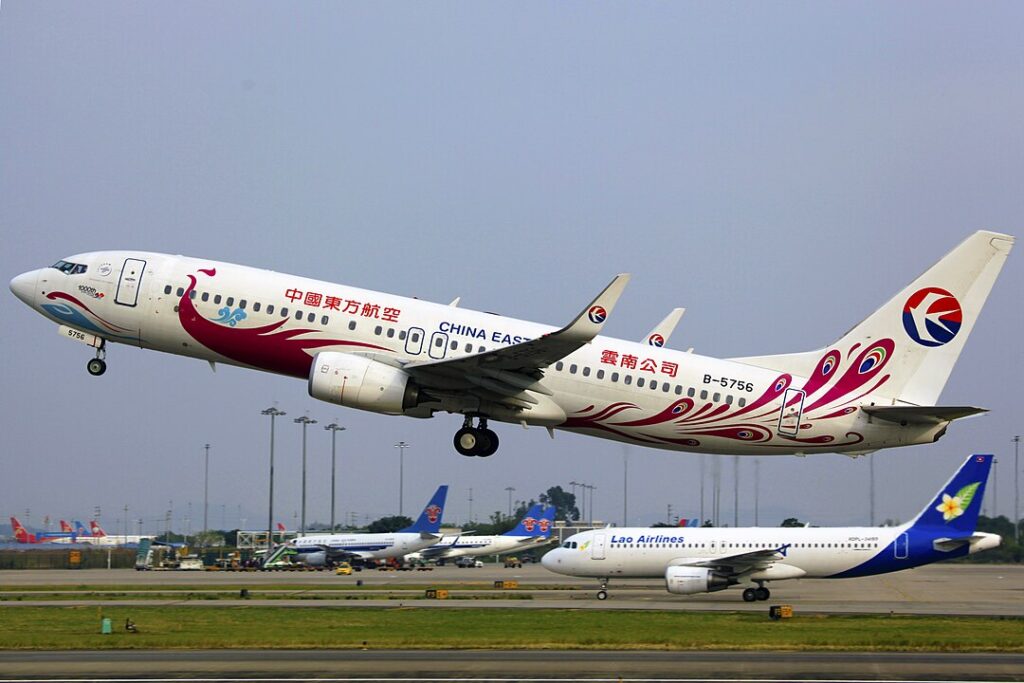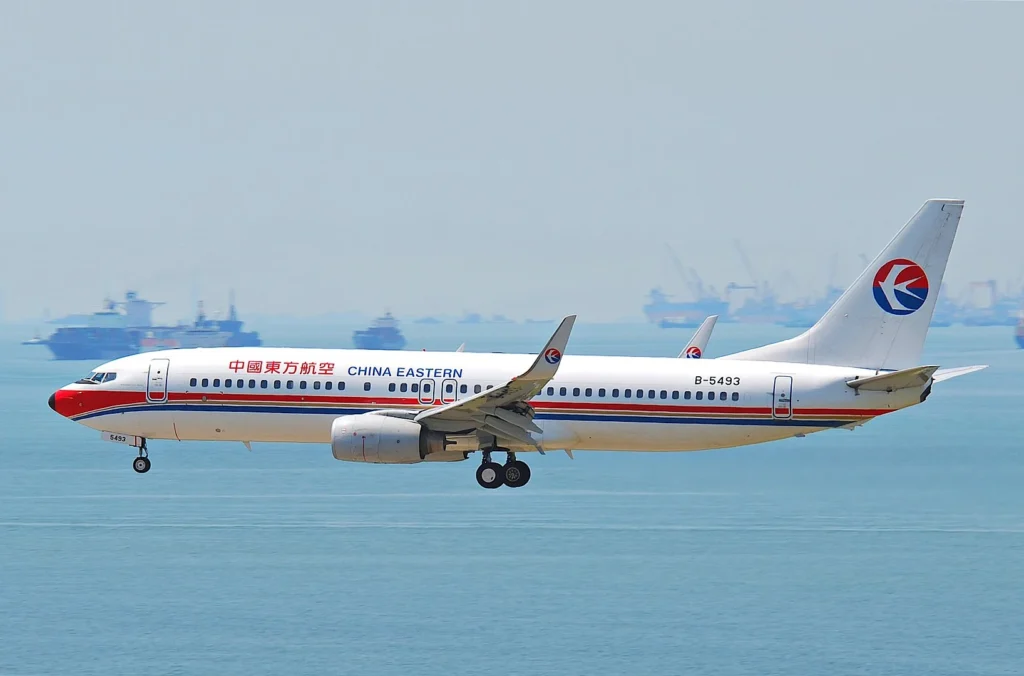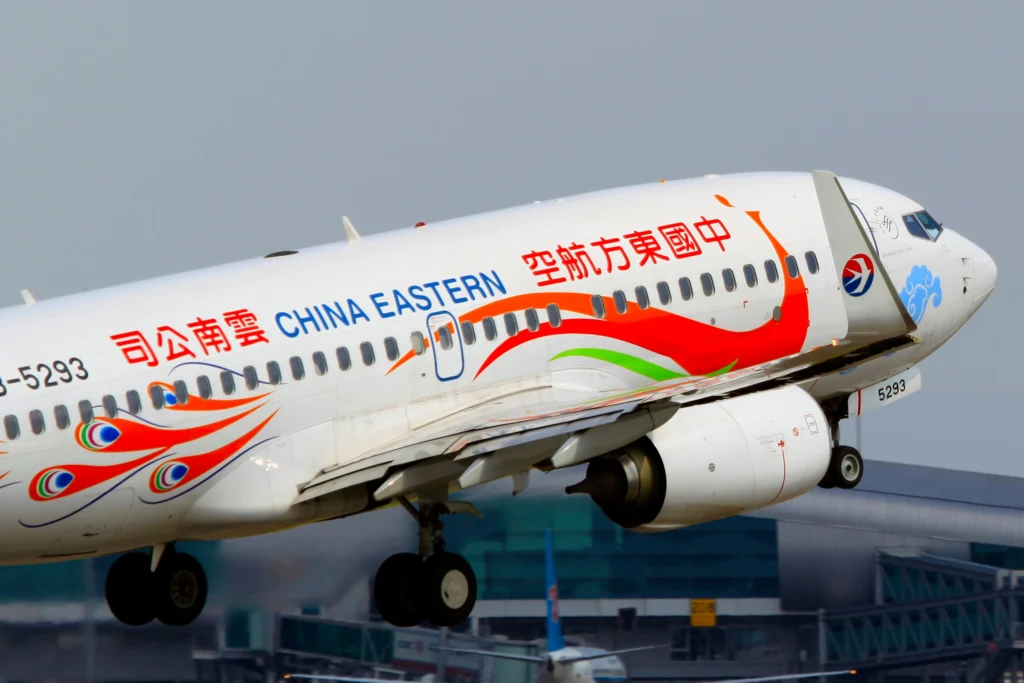
SHANGHAI- China Eastern Airlines (MU) and the Civil Aviation Administration of China (CAAC) are withholding the cause of the fatal March 2022 Boeing 737-800 crash near Wuzhou (WUZ), citing national security and social stability concerns.
The domestic flight operated by China Eastern Airlines suffered a catastrophic nosedive at cruising altitude, killing all 132 people on board. Two years later, Chinese authorities continue to refuse the release of investigation findings, raising global concerns about aviation transparency.
 Photo: By byeangel from Tsingtao, China – B-5756 | China Eastern Airlines | Boeing 737-800 | Purple Peacock Livery | 1000th Boeing Airplane for China | CAN, CC BY-SA 2.0, https://commons.wikimedia.org/w/index.php?curid=39501883
Photo: By byeangel from Tsingtao, China – B-5756 | China Eastern Airlines | Boeing 737-800 | Purple Peacock Livery | 1000th Boeing Airplane for China | CAN, CC BY-SA 2.0, https://commons.wikimedia.org/w/index.php?curid=39501883China Eastern 737 Crash
China Eastern (MU) Boeing 737-800 crash in March 2022 marked China’s deadliest aviation disaster in 30 years. The aircraft, operating a scheduled domestic service within China, abruptly entered a high-speed descent during cruise and impacted terrain near Wuzhou (WUZ).
Despite immediate attention from global regulators and aviation experts, the cause remains officially undisclosed.
The Civil Aviation Administration of China (CAAC), responsible for leading the investigation, released a vague update two years post-accident, calling the incident “very complicated and rare.”
However, the agency declined to specify the underlying cause. It confirmed that no aircraft control command failures, communication issues, hazardous weather, or dangerous goods were involved.
NEWS (or lack thereof): China’s CAAC is withholding a report on the March 2022 crash of China Eastern 5735, a 737-800, saying “disclosure may endanger national security and social stability.” Experts have long suspected the flight was deliberately crashed by one of the pilots. pic.twitter.com/YQ4yEXqx8N
— Jon Ostrower (@jonostrower) June 27, 2025
The pilots were reported as fully certified and fit for duty. This level of disclosure failed to clarify what led to the fatal crash.
When a government information request was recently filed in China for details of the investigation, the CAAC rejected it, citing Articles 14 and 36(3) of the national disclosure regulations.
According to the denial notice, releasing the information could “endanger national security and social stability.”
 Photo: By Aero Icarus from Zürich, Switzerland – China Eastern Airlines Boeing 737-800; B-5493@HKG;04.08.2011/615rm, CC BY-SA 2.0, https://commons.wikimedia.org/w/index.php?curid=26645332
Photo: By Aero Icarus from Zürich, Switzerland – China Eastern Airlines Boeing 737-800; B-5493@HKG;04.08.2011/615rm, CC BY-SA 2.0, https://commons.wikimedia.org/w/index.php?curid=26645332Withholding Crash Details
According to OMAAT, initial unconfirmed reports soon after the crash suggested that the aircraft may have been intentionally brought down. However, without official confirmation, such claims remain speculative.
If it were indeed a case of deliberate pilot action, the lack of a public finding raises questions about whether proper mitigation steps, such as enforcing a two-person cockpit rule, have been adopted across Chinese carriers.
Aviation safety depends on global information sharing and learning from past failures. When critical findings are withheld under the guise of security, it undermines public trust and the integrity of air safety practices.
While national concerns may be valid, complete opacity prevents both domestic and international regulators from implementing preventive measures that could save lives in the future.
 Photo: By byeangel from Tsingtao, China – B-5293 | China Eastern Airlines | Boeing 737-79P(WL) | Golden Peacock Livery | CAN, CC BY-SA 2.0, https://commons.wikimedia.org/w/index.php?curid=39503334
Photo: By byeangel from Tsingtao, China – B-5293 | China Eastern Airlines | Boeing 737-79P(WL) | Golden Peacock Livery | CAN, CC BY-SA 2.0, https://commons.wikimedia.org/w/index.php?curid=39503334Need for Transparency
The refusal to disclose the root cause of this crash sets a concerning precedent. In global aviation, accident investigations are not just about accountability; they’re essential to preventing future disasters.
The International Civil Aviation Organization (ICAO) encourages transparency, with most nations releasing final reports to promote learning and system-wide safety improvements.
By contrast, China’s approach in this case limits meaningful progress and leaves critical questions unanswered.
Whether the crash stemmed from human error, technical malfunction, or intentional action, the lack of disclosure stalls policy updates and undermines the broader goal of safer skies.
Stay tuned with us. Further, follow us on social media for the latest updates.
Join us on Telegram Group for the Latest Aviation Updates. Subsequently, follow us on Google News
Southwest Pilots Win Right to Sue Boeing Over 737 MAX Crashes
The post China Eastern 737 Crash: Why China Hiding the Reason? appeared first on Aviation A2Z.















